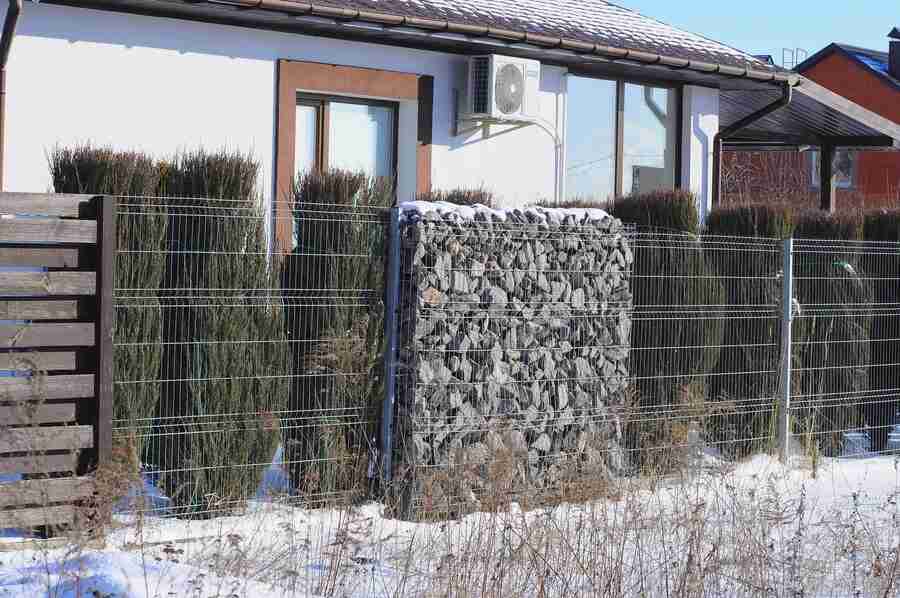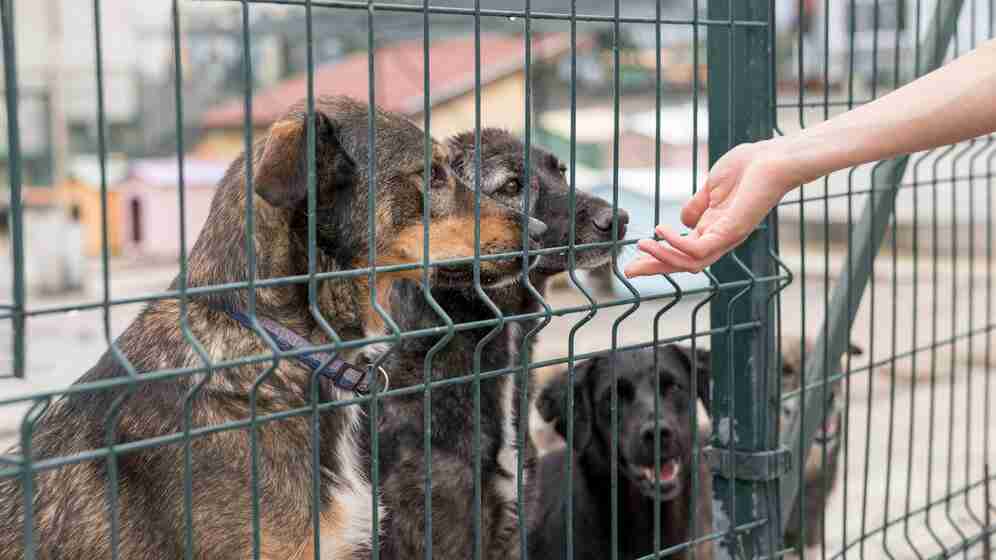
In the realm of pet ownership, the balance between freedom and safety is a constant concern for many. Allowing our furry companions to explore and play outdoors can enrich their lives, but the potential dangers of roaming unsupervised can be a cause for worry. This dilemma has spurred the development of various pet containment systems, among which invisible fences have emerged as a popular choice for many pet owners.
Invisible fences, also known as underground or electric fences, operate on the principle of delivering a mild electric shock to deter pets from crossing a predetermined boundary. While these systems promise to keep pets safely within their designated areas without the need for physical barriers, they have sparked debates among animal lovers and professionals regarding their effectiveness, ethical implications, and impact on pet behavior.
In this blog post, we embark on an exploration of invisible fences, delving into their mechanics, benefits, drawbacks, and the broader considerations surrounding their use. From the science behind their operation to the ethical considerations of using aversive stimuli on pets, we aim to provide a comprehensive understanding of invisible fences and their place in the realm of Pet Containment. So, let’s dive deeper into this contentious yet intriguing aspect of pet care and ownership.
Understanding Invisible Fences: Basics
Invisible fences operate by employing a concealed wire strategically buried along the perimeter of the designated containment zone, complemented by a specialized collar worn by the pet. As the pet nears the boundary, the collar emits a warning tone, alerting them to their proximity to the limit. Should the pet persist and cross the boundary, a mild static correction is administered via the collar, acting as a deterrent to discourage further advancement.
This conditioning process teaches the pet to recognize and respect the established boundaries of their designated area. It is crucial to emphasize the significance of proper installation for the system’s efficacy. The wire must be buried at an appropriate depth to shield it from damage and minimize signal interference, ensuring consistent and reliable performance of the invisible fence system.
Pros and Cons: Weighing the Benefits
Navigating the pros and cons of invisible fences involves a careful examination of the benefits and drawbacks associated with these pet containment systems.
Pros
- Enhanced Aesthetics: Invisible fences maintain the visual appeal of landscapes by eliminating the need for traditional physical barriers.
- Freedom of Movement: Pets can roam freely within defined boundaries without physical obstructions.
- Cost-Effective: Generally more affordable than installing traditional fencing.
- Easy Installation: Installation is often simpler and quicker than erecting visible barriers.
Cons
- Reliability Concerns: Systems may fail under certain conditions, like distractions or equipment malfunctions.
- Aversive Nature: Critics argue that electric shocks as deterrents may cause physical or psychological harm to pets.
- Training Challenges: Some pets may struggle with adapting to the aversive stimuli and boundaries.
- Ethical Debates: The use of correction stimuli raises ethical questions about the welfare of pets subjected to invisible fences.
Safety Measures: Ensuring Pet Well-being
Ensuring the safety and well-being of pets within the confines of an invisible fence requires careful consideration and adherence to safety protocols. Proper training is essential to familiarize pets with the boundaries and teach them to respond appropriately to warning signals.
Regular maintenance of the equipment, including collar checks and battery replacements, is crucial to prevent malfunctions that could compromise the pet’s safety. Additionally, pet owners should monitor their pets closely during initial training periods to address any signs of distress or discomfort caused by the correction stimuli.
Training Techniques: Introducing Boundaries
Training techniques for introducing boundaries to pets within the context of invisible fences are essential for their successful adaptation to the system:
- Gradual Exposure: Introduce pets to the boundaries gradually, starting with short sessions near the perimeter, and gradually increasing their exposure over time to prevent overwhelming them.
- Positive Reinforcement: Use positive reinforcement techniques such as treats, praise, and affection to reward pets for staying within the designated area, reinforcing desired behavior and encouraging compliance.
- Consistent Training: Maintain a consistent training schedule, incorporating regular sessions to reinforce boundary awareness and adherence, ensuring that pets understand and respect the established limits.
- Supervised Practice: Supervise pets closely during training sessions, providing guidance and correction as needed to prevent boundary violations and promote a clear understanding of the containment system’s boundaries.
Behavioral Impacts: Effects on Pet Psychology
The use of invisible fences can have profound effects on the psychology and behavior of pets, influencing their emotional well-being and interactions with their environment.
- Fear and Anxiety: Pets may experience heightened levels of fear and anxiety in response to the aversive stimuli delivered by the invisible fence system, leading to stress-induced behaviors.
- Aggression: Some pets may exhibit aggressive behaviors, such as barking, growling, or even lunging, as a defensive response to the perceived threat posed by the correction stimuli.
- Avoidance Behavior: Pets may develop avoidance behaviors, actively seeking to avoid areas associated with the invisible fence boundary to circumvent the unpleasant sensations caused by the static correction.
- Decreased Confidence: Continuous exposure to correction stimuli can undermine a pet’s confidence, eroding their sense of security and diminishing their willingness to explore or engage with their surroundings.
Ethical Considerations: Balancing Freedom and Control
Ethical debates surrounding the use of invisible fences revolve around the balance between allowing pets freedom to roam and exerting control through aversive stimuli. Critics argue that the use of electric shocks as a deterrent is inherently cruel and can cause physical or psychological harm to pets.
Advocates, on the other hand, contend that when used responsibly and in conjunction with proper training, invisible fences can provide a safe and effective means of containment without restricting pets’ mobility. Finding a balance between ensuring pet safety and respecting their welfare is paramount in navigating the ethical implications of invisible fence usage.
Alternatives to Invisible Fences: Exploring Options
While invisible fences offer a convenient solution for pet containment, they are not suitable for every situation or pet. Fortunately, there are alternative containment options available to pet owners seeking alternatives. Traditional above-ground fences provide a visible and physical barrier that effectively prevents pets from leaving the designated area.
Outdoor enclosures, such as kennels or playpens, offer a secure space for pets to enjoy outdoor activities under supervision. GPS tracking devices and virtual containment systems utilize modern technology to monitor and restrict pets’ movements within defined boundaries. By exploring these alternatives, pet owners can find the most suitable containment solution for their unique needs and preferences.
Installation Insights: DIY vs. Professional Setup
The installation of an invisible fence system requires careful planning and execution to ensure its effectiveness and reliability. While some pet owners may opt for a do-it-yourself approach to save costs, professional installation offers several advantages, including expertise in determining optimal boundary placement, proper burial of the wire, and calibration of the equipment for consistent performance.
Professional installers can also provide guidance on training techniques and troubleshooting common issues that may arise. However, for those with the necessary skills and resources, DIY installation can be a viable option, provided they follow manufacturer guidelines and adhere to local regulations governing pet containment systems.

Maintenance Matters: Keeping Systems Functional
Regular maintenance is essential to keep invisible fence systems functioning properly and ensure the safety of pets within the containment area. This includes routine checks of the boundary wire for damage or breaks, inspection of the collar for proper fit and functionality, and testing of the transmitter and receiver to verify consistent signal strength. Battery replacement for the collar should be performed as needed to prevent interruptions in correction delivery.
Additionally, seasonal adjustments may be required to account for changes in weather conditions that could affect system performance. By prioritizing maintenance tasks, pet owners can minimize the risk of system failure and maintain a secure environment for their pets.
User Experiences: Real-life Perspectives
Real-life experiences of pet owners using invisible fences offer valuable insights into the practicality and effectiveness of these containment systems. While some users report success in containing their pets and providing them with freedom to roam safely, others highlight challenges such as training difficulties, equipment malfunctions, or ethical concerns.
User experiences can vary widely depending on factors such as pet temperament, training methods, and environmental conditions. Hearing firsthand accounts from other pet owners can help prospective users make informed decisions about whether an invisible fence is the right choice for their specific circumstances.
In conclusion, invisible fences present a complex array of considerations for pet owners. While they offer the promise of freedom and convenience, their efficacy, ethical implications, and impact on pet behavior warrant careful scrutiny. Proper training, maintenance, and monitoring are essential to ensure the safety and well-being of pets within the confines of an invisible fence.
Alternatives such as traditional fences, outdoor enclosures, and GPS tracking systems provide viable options for pet containment, each with its own set of advantages and limitations. Ultimately, the decision to use an invisible fence should be made thoughtfully, weighing the needs of the pet and the ethical implications of employing aversive stimuli.
Are you considering a pet containment solution for your furry friend? Contact High Quality Fence today at 209-815-9015 or email us at info@highqualityfence.com to explore our range of options and discuss which solution best fits your needs. Our team of experts is dedicated to providing high-quality fencing solutions tailored to your specific requirements. Ensure your pet’s safety and well-being with High Quality Fence.


